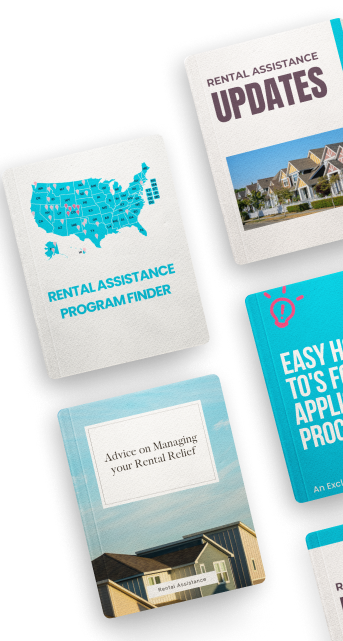The Rise of Co-Buying: How Gen Z is Redefining Homeownership
This generation, often referred to as "Zoomers," is known for being collaborative, pragmatic, and flexible, according to Stanford’s Center for Advanced Study in the Behavioral Sciences. Co-buying fits perfectly into these traits, offering them an innovative way to address today's housing challenges.
While older generations typically viewed homeownership as a milestone for individuals or married couples, Gen Z is turning that mindset on its head. The challenges faced by today’s first-time buyers—like higher home prices and rising mortgage rates—are far greater than those faced by prior generations.
Even Millennials, who struggled with affordability themselves, are less likely to consider co-buying than their younger counterparts. Research from the 2025 NextGen Homebuyer Report shows that Gen Z is 78% more likely to consider co-buying than Millennials, highlighting the significant shift in attitudes.
Why Co-Buying Is Popular Among Gen Z
1. Affordability Challenges
The housing market has changed dramatically since the COVID-19 pandemic. Home prices have continued to climb, and while wages have seen modest growth, they haven’t kept pace with the surge in both property values and mortgage interest rates.
Back in December 2020, mortgage rates hit an all-time low of 2.66%. However, as of April 2025, the average 30-year fixed rate had soared to 6.62%. While experts believe rates may dip below 6% in late 2025 or 2026, affordability remains a major issue for first-time homebuyers.
For Zoomers, who are frequently priced out of the market as solo buyers, co-buying has become a smart solution. By pooling their resources with friends, relatives, or their significant others, Gen Z homebuyers can gain access to markets that might otherwise have been unattainable.
2. Changing Social Norms
Young buyers today are rethinking traditional living arrangements. Many Gen Zers, influenced by a pragmatic mindset, aren’t afraid to embrace co-buying as a temporary solution to achieve their long-term vision of homeownership—complete with a spouse, kids, and the proverbial picket fence.
Co-buying also allows them to secure a property sooner, giving them the opportunity to build equity and leverage rising home prices toward their future goals. This approach aligns with their strategic mindset, making co-buying a stepping stone on their journey to independent homeownership.
3. Remote Work and Flexibility
The rise of remote work has transformed the idea of communal living. Instead of cramped apartments in city centers, Gen Z co-buyers are looking at spacious homes in suburban or rural areas, each with their own bedroom, en suite bathroom, and home office. These setups allow for shared living without sacrificing privacy.
Additionally, relocating to states with lower income and property taxes makes homeownership even more affordable. Many rural and suburban homes qualify for USDA loans, which offer competitive rates and require no down payment for buyers with moderate or low incomes.
Co-Buying vs. Traditional Homeownership
According to the 2025 NextGen Homebuyer Report, Gen Z approaches homeownership very differently from Millennials.
Millennials typically:
- Purchase homes alone or with a partner.
- Opt for fixer-uppers or homes in lower-cost areas over co-buying.
- Open to co-buying with family or friends.
- Comfortable sharing financial responsibilities for homeownership.
- Exploring alternative financing options, such as joint mortgages and co-living arrangements.
Pros and Cons of Co-Buying
Co-buying offers both advantages and challenges. Here’s what Gen Z homebuyers should consider:
Pros:
- Easier market entry: Shared costs make homeownership possible sooner.
- Opportunity to build equity more quickly.
- Shared expenses for mortgage, taxes, and maintenance.
- Access to properties in desirable areas.
Cons:
- Legal and financial complexities.
- Potential disagreements between co-owners.
- Challenges when exiting a co-ownership agreement.
How to Navigate Co-Buying
Legal Considerations
Co-buying requires careful legal planning to avoid misunderstandings and protect everyone’s interests. Drafting a co-ownership agreement is essential—it outlines important details such as ownership shares, financial responsibilities, and even what happens when someone wants to exit the partnership.
For example, if one co-owner contributes more toward the down payment or monthly costs, they may be entitled to a larger ownership share. Additionally, buyers should address potential scenarios such as one person moving out or wanting to sell their portion of the property.
It’s also important to plan for how mortgage responsibilities will be handled. If one co-owner leaves, lenders usually require the remaining co-owner to prove they can manage the mortgage independently.
Financial Planning
All co-buyers need to meet mortgage qualification requirements. If one person has a lower credit score or higher debt, it can impact the loan terms or lead to a declined application.
It’s smart to check credit scores and debt-to-income ratios (DTIs) early in the process to identify potential issues and work on improving them. Budgeting for monthly expenses—such as mortgage payments, property taxes, and repairs—is key to ensuring long-term success.
Communication and Conflict Resolution
Open communication is crucial for co-buying to run smoothly. While not every detail needs to be included in a formal contract, discussing expectations about living arrangements can prevent future problems.
Potential topics to discuss include:
- Cleaning responsibilities in shared spaces.
- Quiet hours for music and TV.
- Joint purchases (e.g., food, household goods) versus personal items.
Having these conversations upfront makes things easier down the line and helps ensure the arrangement stays fair for everyone.
The Future of Homeownership
The rise of co-buying could change homeownership for future generations. While it may not fully replace traditional models, it reflects how Gen Z is adapting to economic pressures with creative solutions.
With homes increasingly out of reach for individual buyers, these collaborative approaches help young people access long-term wealth-building opportunities sooner rather than later.
Whether co-buying becomes a dominant trend or simply remains an option for those facing affordability challenges, it’s clear that Gen Z is shaping the future of homeownership in new and exciting ways.
-
Find programs that help with rent by signing up here












